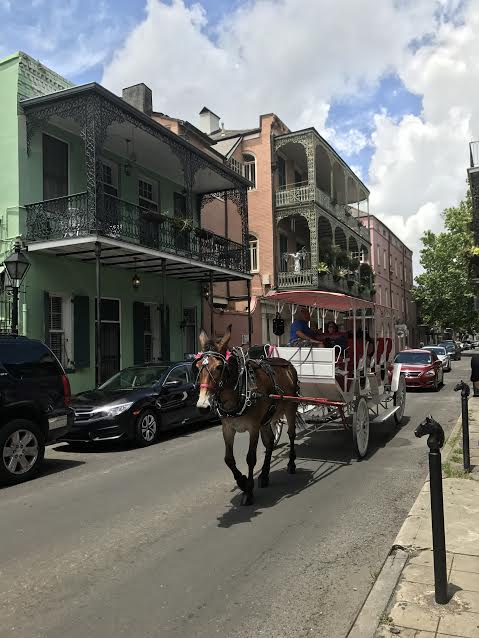Jazz is something with which I am familiar, having been a part of my high school jazz ensemble. I played the trumpet (which, obviously, makes me part of the coolest section in the band). I knew coming down to New Orleans would be like a jazz nerd Comicon. Needless to say, I was excited. And NOLA has not disappointed. Jazz, in so many ways, is the essence of the city; its heart and soul; the thing that drives its rhythm. Originated in the brothel houses of Storyville, influenced by West African musical traditions, and brought into the mid-20th century by such greats as Louis Armstrong, jazz tells the tale of the African-American experience. I'll talk more about Dr. Gaines in Cajun country, but what I will say now about the time we all shared with the A Lesson Before Dying author in his home was that he emphasized jazz's influence on his writing. At the time he began penning his works, there were essentially no books by black authors about being black in America. There was only jazz. The blues tell of the woe and hardships in life, of loves lost, of people who have done you wrong, of a rainy day when you were expecting sunshine. Most importantly, the blues tell of an oppression as old as the country itself.
In a brief digression, below are pictures taken at the Whitney Plantation on the historic River Road. Unlike most other plantation tours you can go on today, the Whitney tells of plantation life from the perspective of the slaves that worked the fields of sugarcane in the sweltering Louisiana heat, day in and day out. Being shown around by our unbelievable tour guide Ali was an experience I will never forget. And if you want to understand the origins of the blues – you need look no further than places like the Whitney. To listen to the wind blowing through the stalks of sugarcane, to listen to the eaves creaking in the slave quarter houses, is to hear the Christian spirituals and West African traditional songs that would eventually give birth to the art form of jazz.
But Jazz is joyous too. It pulsates at the city's core and serves as the soundtrack to all the raucous, rowdy goings-on in places like Bourbon Street. Ah, Bourbon Street. My least favorite part of NOLA – but only because, like Times Square in New York City and Fisherman's Wharf in San Francisco, it's a bit of a tourist trap. But, nonetheless, when one thinks of the New Orleans party scene, one usually thinks of Bourbon.
Like the old jazz cats that play in front of shops and cafes and the young children who bang on overturned buckets-turned-drums, Bourbon Street is always vibing. People stand out on balconies overlooking the gaiety down below – men and women in work clothes, having just gotten off, hanging out with friends, watching the street performers and eager tourists hop from bar to bar, bistro to bistro. There are all kinds of characters here and I now fully understand Louis's apt description of this city in Interview with the Vampire.
“This was New Orleans, a magical and magnificent place to live. In which a vampire, richly dressed and gracefully walking through the pools of light of one gas lamp after another might attract no more notice in the evening than hundreds of other exotic creatures...”
These are also the very same people Ignatius J. Reilly labels as “gamblers, prostitutes, exhibitionists, Antichrists, alcoholics, sodomites, drug addicts, fetishists, onanists, pornographers, frauds, jades, litterbugs, and lesbians” in John Kennedy Toole’s comedic masterpiece A Confederacy of Dunces…and that’s just on page 3.
While I don’t exactly share Ignatius’s harsh opinions about the city of New Orleans, I can still see how a man such as himself would view this vibrant, sensual world as a black pit of corruption.
But if the people of NOLA are all sinners, then sign me up for the next meeting of Club Damned, because these folks sure know how to have a good time. I have loved every minute here, from listening to the legendary Preservation Hall Jazz Band (front and center in the first row, so the trumpet player could properly blow out my eardrums) to riding the streetcar all the way down St. Charles Ave to the Garden District for some Creole Creamery sundaes. We’ve visited the Backstreet Museum to learn about Mardi Gras and the New Orleans social and pleasure clubs, danced to street performers on Royal, and discovered my new favorite musician, who was performing in Lafayette Square just outside our hotel (his name is Anders Osborne and you need to listen to his song “Sentimental Times” RIGHT. THIS. INSTANT.)
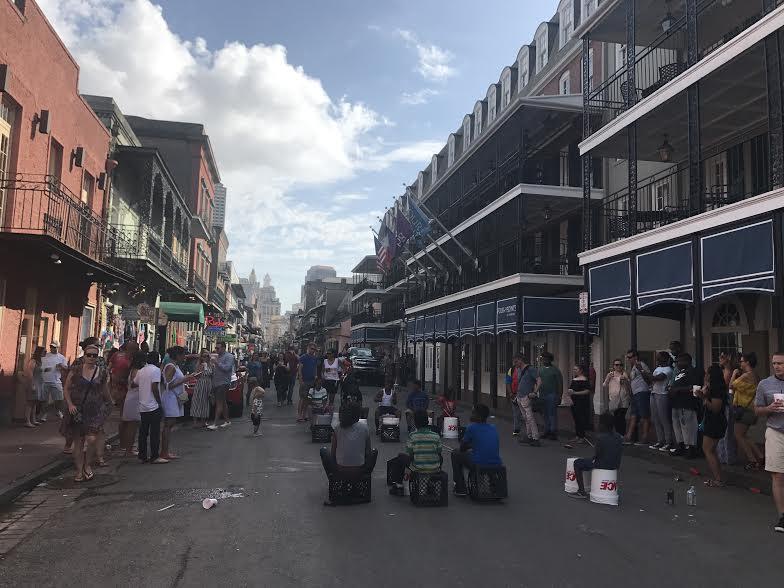
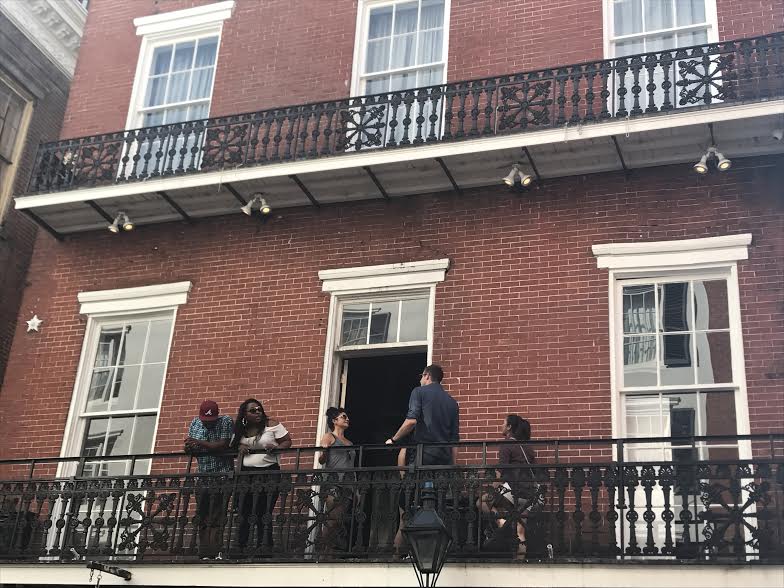
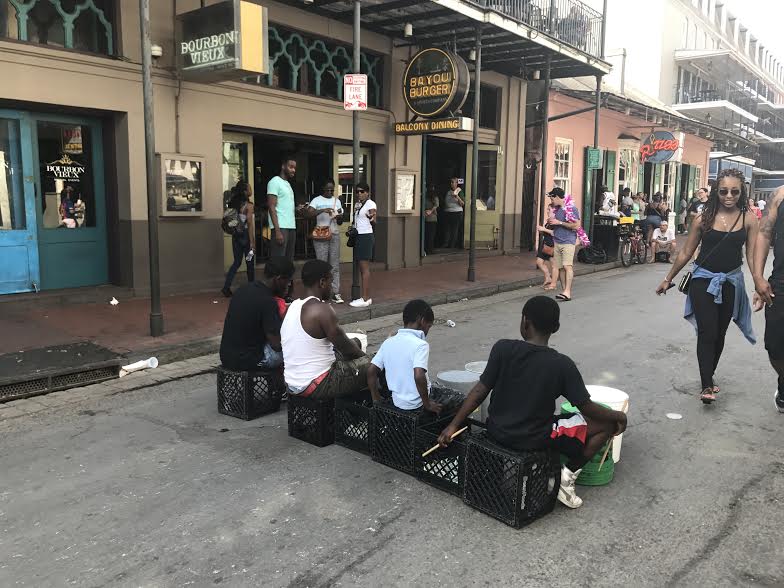
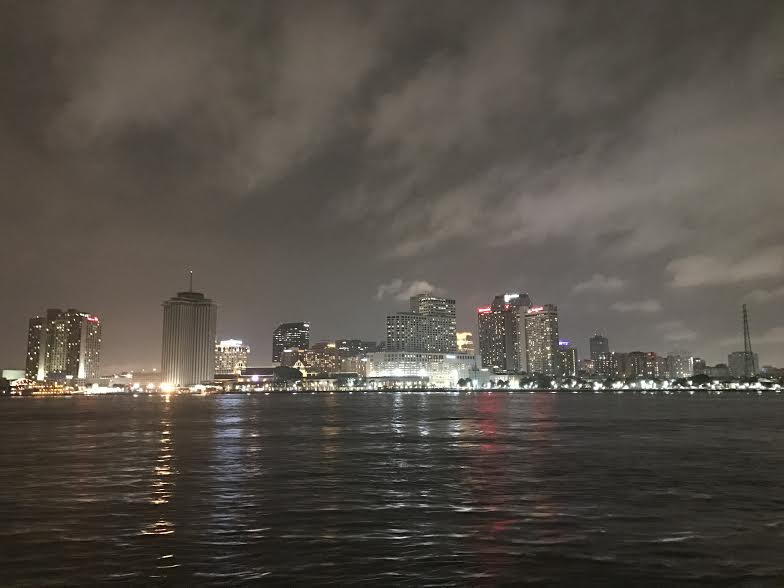
I’ve discovered that New Orleans is truly the best place to bookpack. Here, more than any other place I’ve visited, that “good eeriness” comes alive. Walking through the French Quarter around Jackson Square, it seems entirely possible you’ll find Ignatius at his hot dog stand, leering at the passers-by. Exploring the Garden District at night, it seems entirely possible Louis and Claudia (of IWTV) could meet you under a lonely street lamp, the Spanish moss above you blowing somberly in the breeze.
MEAL OF THE MOMENT: BEIGNETS
Okay, so beignets aren’t technically a meal. More like a sweet snack/dessert. But whatever, okay? They’re powdery and warm and delicious and I ate three for dinner one night, so they’re a meal in my eyes. The best place to get them is Café Du Monde. Don’t let anyone tell you otherwise. The place is world-famous for a reason.
Despite what you may think, this variation of beignet is original to NOLA, not France. In fact, though the city is heavily influenced by French culture, there are a great many aspects of fair New Orleans that might seem “French” but are more like “NOLA French.” Upon closer examination, some of the “French” street names are misspelled, and the local slogan “laissez le bon temps rouler” (which is supposed to mean “let the good times roll”) actually makes no sense in French.










